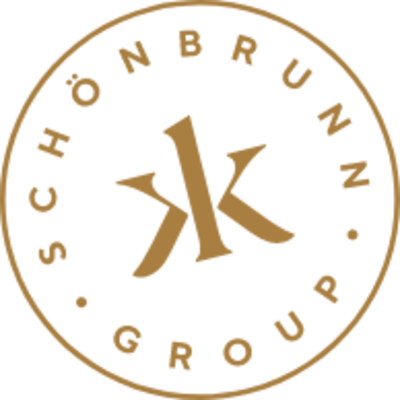Great Parterre
In keeping with the principles of Baroque horticultural design, gardens were an expression of a ruler’s status and as such were as a rule related to the architecture of the palace, being an extension of its magnificent interiors.
Statues in the Great Parterre
When the hill at Schönbrunn was landscaped it was decided to redesign the Great Parterre at the same time.
Rhea Kybele
Also the boskets were decorated with statues by Christian Willhelm Beyer and Johann Baptist Hagenauer.
Alexander and Olympias
Also the boskets were decorated with statues by Christian Willhelm Beyer and Johann Baptist Hagenauer.
Cincinnatus
Also the boskets were decorated with statues by Christian Willhelm Beyer and Johann Baptist Hagenauer.
Roman Matron
Also the boskets were decorated with statues by Christian Willhelm Beyer and Johann Baptist Hagenauer.
Eurydice
Also the boskets were decorated with statues by Christian Willhelm Beyer and Johann Baptist Hagenauer.
Hesperia and Arethusa
Also the boskets were decorated with statues by Christian Willhelm Beyer and Johann Baptist Hagenauer.
Diana (by J. B. Hagenauer)
Also the boskets were decorated with statues by Christian Willhelm Beyer and Johann Baptist Hagenauer.
Apollo (by J. B. Hagenauer)
Also the boskets were decorated with statues by Christian Willhelm Beyer and Johann Baptist Hagenauer.
Hercules
Also the boskets were decorated with statues by Christian Willhelm Beyer and Johann Baptist Hagenauer.
Monument for Philipp Franz Siebold
The base displays a portrait of Siebold.
Franz Stephan
One year after the sudden death of Franz Stephan in 1765, Maria Theresa commissioned a bronze bust of her much-loved husband.
Joseph II
In 1810 a monument was erected to Joseph II.
The Family Monument
Commissioned from Franz Thaler in 1802.
Maze
The Maze at Schönbrunn was laid out around 1720 and originally had four quadrants with a central (probably elevated) pavilion.
Neptune Fountain
Designed as the crowning element of the Great Parterre, and sited at the foot of the hill behind the palace is the Neptune Fountain, which was conceived as part of the overall design of the gardens and park commissioned by Maria Theresa in the 1770s.
Gloriette
The Early Classicistic colonnaded Gloriette was built to Hohenberg's designs on the crest of the hill in 1775.
Small Gloriette
Situated in the middle of the wooded hillside on the eastern side of the park is the Small Gloriette, a tower-like, two-story pavilion built between 1755 and 1772 and probably based on a design by court architect Nikolaus Pacassi.
Obelisk Fountain
Also situated at the foot of Schönbrunn Hill, the Obelisk Fountain constitutes the visual focus at the end of the eastern diagonal avenue, and together with the Gloriette and the Zoo is one of the most important focal points in the gardens.
Roman Ruin
Originally called the Ruin of Carthage, the Roman Ruin stands at the foot of the wooded slopes of Schönbrunn Hill.
Columbary
Built at some time between 1750 and 1776, the Columbary or dovecote is a tall, circular aviary constructed of wire mesh with a dome-like copper roof crowned by a lantern-like structure. Four walled alcoves were added to provide the doves with roosting space.
Fair Spring
Tucked into the corner of a hedged walk on the Meidling (east) side of the park is the Fair Spring. The first well house on this site is thought to have been built by the court gardener Adrian van Steckhoven, but this was replaced by a new structure designed by court architect Isidor Canevale in 1771.
Angel Fountain
The Angel Fountain is probably one of the sculptural features with which the park as a whole was provided around 1777.
Parade Court Fountains
The group of figures in the western basin were made by Franz Anton Zauner and represent the rivers Danube, Inn and Enns.
Naiad Fountains
At the intersection of each of the two stelliform systems of avenues on either side of the park at Schönbrunn is a rondeau or circular open space containing at its centre a pool with sculptural figures known as the Naiad Fountain.
Privy Garden
Meidling Privy Gardens: Crown Prince Garden and the Garden on the Cellar - Dating to around 1745/50, the plans for the laying out of the Meidling Privy Gardens were probably drawn up by the Lotharingian garden designer Louis Gervais.
Orangery
As far back as the time of the dowager empress Wilhelmine Amalie an orangery garden was established at Schönbrunn which included a hothouse for overwintering the tender citrus trees. In 1754 Franz I Stephan instigated the building of the Orangery by Nikolaus Pacassi, probably to designs by Nicolas Jadot.
Carriage Museum
In 1922 the most important part of the collection of carriages used by the imperial family and Viennese court, including state coaches, ceremonial and gala carriages, sleighs and sedan chairs, was transferred from the imperial court stables at the Vienna Hofburg (part of today’s Museumsquartier) to Schönbrunn and housed in the former winter riding school which had been specially adapted for this purpose.
Zoo
Like the Dutch Botanical Garden at Schönbrunn, the Menagerie was originally founded by Emperor Franz I Stephan, who had a profound interest in natural history.
Palm House
The Palm House is located on the site of the former Dutch Botanical Garden and was erected in 1881/2 to designs by Franz Xaver Segenschmid.
Desert House
Emperor Franz Joseph I commissioned a hothouse based on designs by the architect Alfons Custodis for the overwintering of his extensive and extremely valuable ‘New Holland Collection’, mainly containing botanical specimens from Australia and South Africa.
Palm House Garden and Botanic Garden
In 1753, Maria Theresa’s husband, Emperor Franz I Stephan, who was a keen amateur natural scientist, bought a neglected enclosed field from the neighbouring village of Hietzing, on which he had a ‘Dutch Botanical Garden’ laid out.
Panoramabahn
The grounds of Schönbrunn, a World Heritage Site, cover 160 hectares. Visitors can ride in comfort to all of its attractions on the diesel-powered Schönbrunn Panorama Train.
to the Panoramabahn
Original Viennese strudel show
Original Wiener Strudelshow
Marionette Theatre at Schönbrunn Palace
Two-and-a-half centuries of tradition meet state-of-the-art stagecraft: enjoy princely entertainment like at the court of Empress Maria Theresa, performed with priceless hand-crafted figures.
The playing technique of this theatre has been added to the UNESCO list of Intangible Cultural Heritage. Performances take place all year round as full-length evening productions for adults: see Mozart’s Magic Flute in a humorous production with that special Viennese charm, or the thrilling musical Sisi’s Secret about the legendary Empress Elisabeth.
www.marionettentheater.at
Schoenbrunn Palace Concerts
Daily at 8.30 pm
The Schoenbrunn Palace Orchestra awaits you at the Palace Orangery where Mozart himself performed in 1786. The concert is a fine selection of masterful music by Mozart and Strauss.
Exclusive packages with palace tour, dinner & concert available.
Book here: www.imagevienna.com
Schlosstheater Schönbrunn
to Schlosstheater Schönbrunn
Lindt Chocolate Boutique
The Lindt Maîtres Chocolatiers will spoil you with refined chocolate specialties in the Lindt Boutique. The finest praline compositions, classic and unusual bar recipes and a large selection of Lindt chocolate gifts await you. Choose your favorite mix from a diverse Pick & Mix range and enjoy freshly prepared coffee creations and drinking chocolates.
For those who love ice cream, a Crema Gelata awaits you in the warmer months.
www.lindt.at
Virtual Reality
Take a seat in the apartment of the Crown Prince at Schönbrunn Palace and immerse yourself in the world of the Habsburgs. With the latest VR technology, you will be taken on a journey back to the time of the Austrian Empire, where you will experience up-close many historical moments and witness the incredible history of Schönbrunn Palace.
Austria Trend Hotels
In a imperial setting with a spacious 167 m² at their disposal, guests can wine and dine like an emperor and bed down like a princess. A project that is unique throughout Europe has come to life in the suite in Schönbrunn Palace. In partnership with Austra Trend Hotels Schönbrunn Palace gives you the chance to stay overnight in one of the most famous treasures of Austria’s cultural heritage.
Reservations:
Schloß Schönbrunn Suite, Austria Trend Hotels
Tel. +43 1 878 04
thesuite.at
office@austria-trend.at
Restaurant in the Schönbrunnerbad
Schönbrunner Schlosspark 1, 1130 Wien
Tel.: +43 1 8175353
www.luvbeachclub.com
Gerstner K. u. K. Hofzuckerbäcker café-restaurant
The Gerstner K. u. K. Hofzuckerbäcker café-restaurant in the Kavalierstrakt invites you to round off your visit to Schönbrunn Palace in a cozy coffee house atmosphere. Enjoy exquisite coffee, homemade pastries and hearty specialties indoors or in the spacious guest garden.
WWW.GERSTNER.AT
SCHOENBRUNN[AT]GERSTNER.AT
Café Gloriette
Schlosspark Schönbrunn, 1130 Wien
Tel.: +43 1 879 13 11
Fax: +43 1 879 13 11-11
office@gloriette-cafe.at
www.gloriette-cafe.at
Gasthaus Tirolergarten
Schlosspark Schönbrunn, 1130 Wien
Tel.: +43 1 879 3556-20
Fax: +43 1 879 3556-52
office@zoovienna-gastro.at
www.gasthaustirolergarten.at
Café Restaurant Kaiserpavillon
Maxingstraße 13 b, 1130 Wien
Tel.: +43 1 879 3556-10
Fax: +43 1 879 3556-12
office@zoovienna-gastro.at
www.zoovienna-gastro.at
Restaurant Kutscher G'wölb
Schloß Schönbrunn / Hausdienergang, 1130 Wien
Tel.: +43 1 877 22 16 12
restaurant@steinmetz-gastro.at
www.kutschergwoelb.at
Café Pavillon
From April the Café Pavillon in Schönbrunn Palace Park invites visitors to enjoy a summer retreat. A popular meeting place for families, it offers relaxation in a historic atmosphere. With pastries from the Gerstner K. u. K. Hofzuckerbäcker as well as breakfast, classic Viennese delicacies and local specialties, the Café Pavillon offers a varied selection. Coffee specialties, refreshments and the legendary Kaiserschmarrn complete the offer.
PAVILLON[AT]GERSTNER.AT
WWW.CAFEPAVILLON.AT
Schönbrunner Schlosscafé
Welcome to Schönbrunner Schloßcafé!
At Gardetrakt
Apart from specialty coffees and teas we serve various types of breakfast (available all day) as well as a wide range of typical Viennese cakes, pastries and hot snacks. A special attraction is our outdoor seating area with its magnificent view of Schönbrunn Palace.
Schönbrunner Schloßstraße 47, 1130 Vienna
Tel.: +43 1 810 3259
Fax: +43 1 810 3259
cafe.schoenbrunn@lagardere-tr.at
We do not accept reservations. For opening hours please call Schönbrunner Schloßcafé.
Restaurant & Heuriger Joseph II.
Located in a side wing of Schönbrunn Palace, the Heuriger "Joseph II" invites you to enjoy delicious Viennese Heurigen delicacies and a variety of Viennese wines. In the midst of one of the most popular cultural sites in the world, you can enjoy a hearty piece of Viennese Heurigen culture.
Schönbrunn Palace
Kontrollorstöckl, Schönbrunner Schloßstraße 47, A-1130 Vienna
+43 (0)1 934 62 20
INFO@JOSEPH2.AT
www.restaurant-schoenbrunn.at
Schönbrunner Stöckl
Restaurant and Dinnertheatre
at the Meidling Gate
Tel.: +43 (0) 660 63 63 200
office@trojani.com
www.schoenbrunnerstoeckl.com
www.dinnertheater.wien
From July - September Summerstage with live music- free entrance
Friday & Saturday from 5 p.m // Sunday from 1 p.m.
Eis Greissler
Icecream trucks at the Schönbrunn area
From April to October, ice cream trucks from "Eis Greissler" provide refreshments on the area of Schönbrunn!
www.eis-greissler.at






